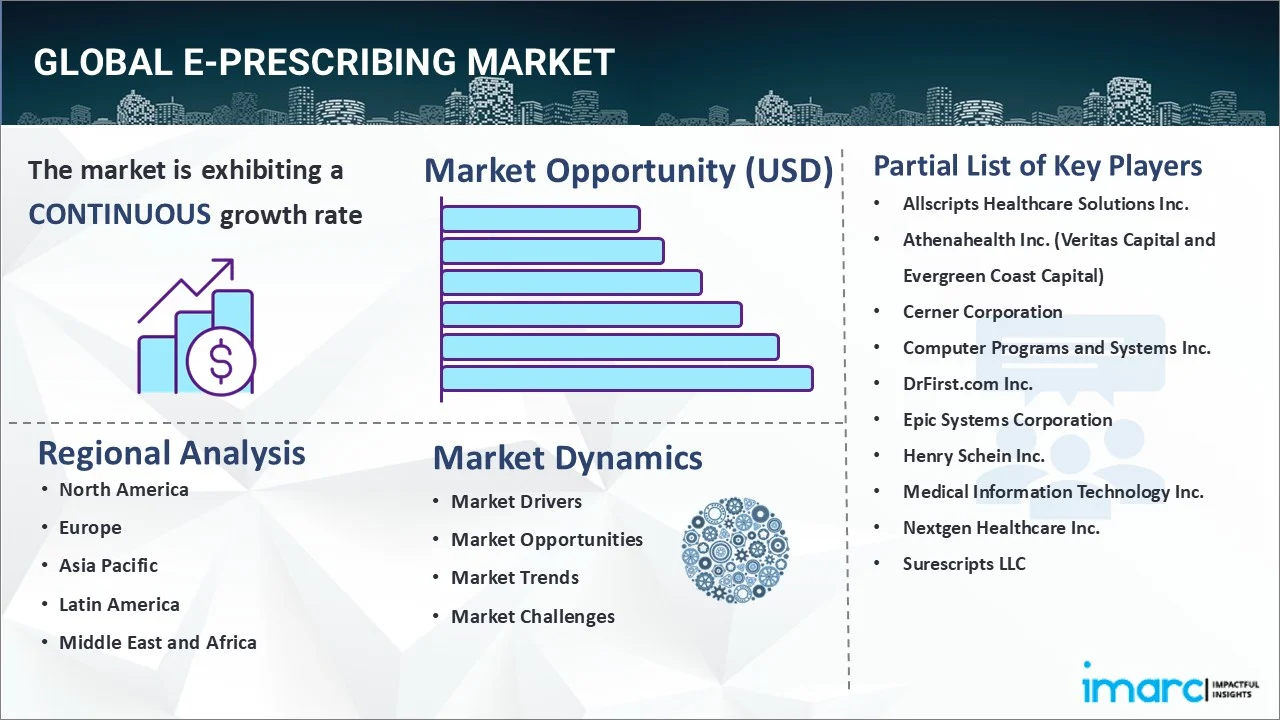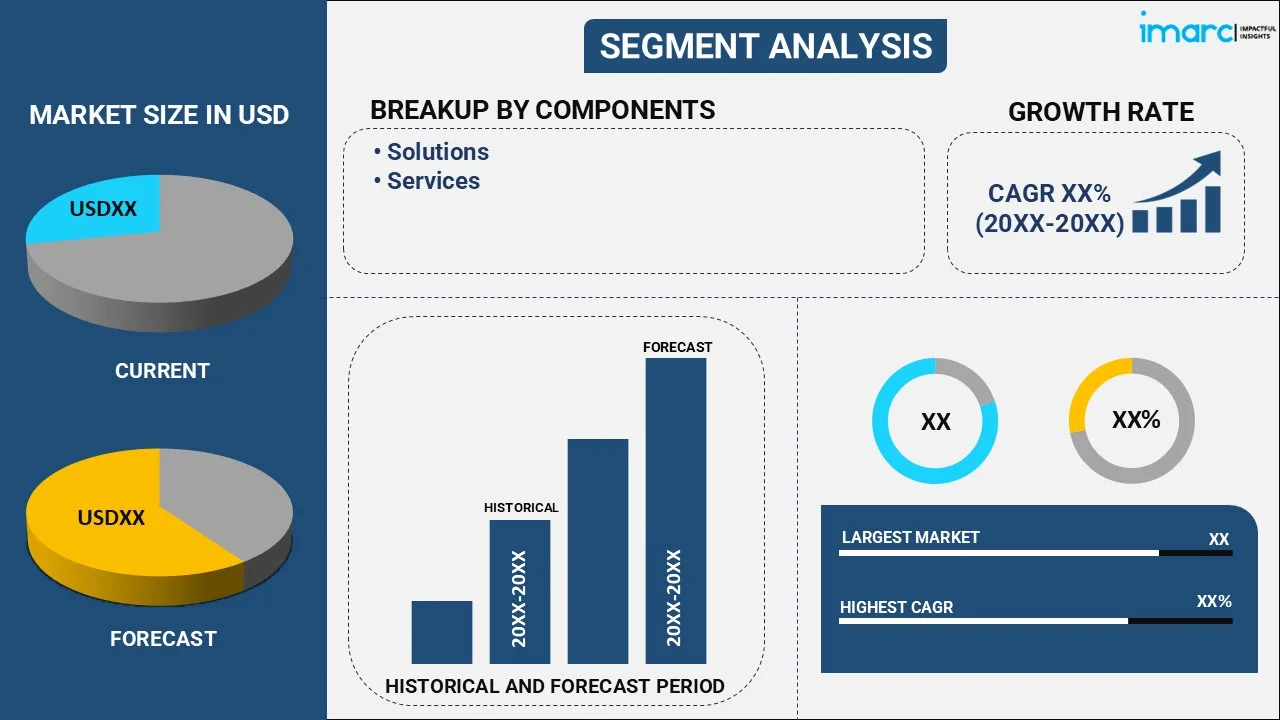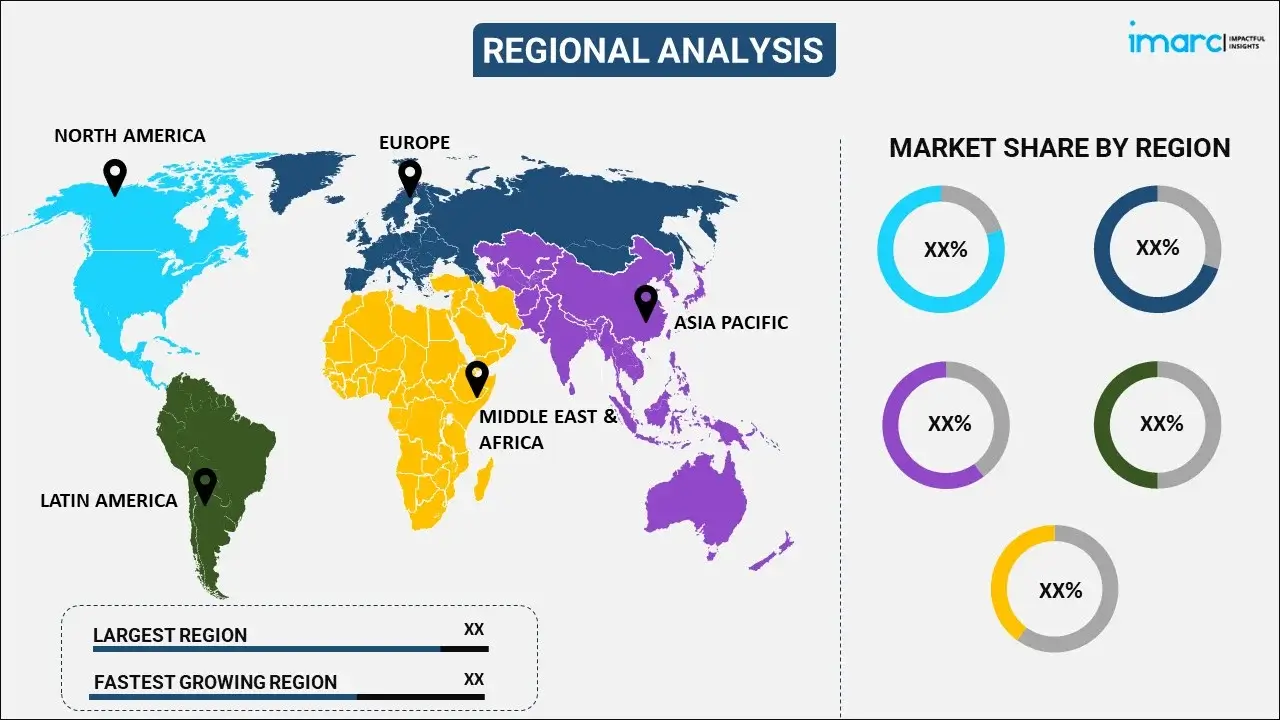
E-Prescribing Market Report by Component (Solutions, Services), Delivery Mode (Web-Based, Cloud-Based, On-Premises), End User (Hospitals, Pharmacies, Office-Based Physicians, and Others), Specialties (Oncology, Sports Medicine, Neurology, Cardiology, and Others), and Region 2025-2033
E-Prescribing Market Overview:
The global e-prescribing market size reached USD 2.7 Million in 2024. Looking forward, IMARC Group expects the market to reach USD 13.0 Million by 2033, exhibiting a growth rate (CAGR) of 18.94% during 2025-2033. There are various factors that are driving the market, which include the rising focus on maintaining patient safety while reducing medication errors, increasing adoption of healthcare information technology, including electronic health records (EHRs), and favorable government initiatives.
|
Report Attribute
|
Key Statistics
|
|---|---|
|
Base Year
|
2024
|
|
Forecast Years
|
2025-2033 |
|
Historical Years
|
2019-2024
|
|
Market Size in 2024
|
USD 2.7 Million |
|
Market Forecast in 2033
|
USD 13.0 Million |
|
Market Growth Rate 2025-2033
|
18.94% |
E-Prescribing Market Analysis:
- Major Market Drivers: One of the key market drivers include the rising focus on streamlining workflow. Moreover, there is an increase in the need for enhanced patient experience, which is acting as another growth-inducing factor.
- Key Market Trends: The rising focus on enhancing patient safety while minimizing medication errors and increasing adoption of healthcare information technology (IT) are main trends in the market.
- Geographical Trends: North America exhibits a clear dominance, accounting for the biggest market share owing to the presence of highly developed healthcare infrastructure.
- Competitive Landscape: Numerous market players in the e-prescribing industry are Allscripts Healthcare Solutions Inc., Athenahealth Inc. (Veritas Capital and Evergreen Coast Capital), Cerner Corporation, Computer Programs and Systems Inc., DrFirst.com Inc., Epic Systems Corporation, Henry Schein Inc., Medical Information Technology Inc., Nextgen Healthcare Inc., Surescripts LLC., among many others.
- Challenges and Opportunities: Major e-prescribing market challenges are data breaches and unauthorized access to sensitive patient information and technical issues including system downtime or slow performance that can disrupt the prescribing process and impact patient care. Nonetheless, the integration of advanced technologies like machine learning (ML) and artificial intelligence (AI), data analytics, and blockchain, rising collaborations and partnerships between key players, healthcare facilities, and academic and research institutions, and the development of patient engagement tools and mobile apps, are projected to overcome these challenges and provide market opportunities.

E-Prescribing Market Trends:
Patient Safety and Medication Error Reduction
The rising focus on enhancing patient safety while minimizing medication errors is impelling the market growth. Traditional paper-based prescriptions are susceptible to errors including illegible handwriting and incorrect dosages, which can lead to adverse drug events and compromised patient well-being. E-prescribing systems address these issues by providing clear and electronically generated prescriptions that can be easily interpreted by pharmacists and healthcare providers. These systems help prevent potentially harmful medication combinations through built-in checks for drug interactions and allergies. Furthermore, the rising focus on improving patient outcomes and overall healthcare quality is offering a favorable e-prescribing market outlook. Key players are introducing solutions that offer enhanced patient safety and satisfaction. For instance, on 21 June 2023, Telecare launched Australia’s first-ever standalone platform for e-prescriptions. It is designed to take the place of traditional paper prescription techniques. This technology is set to reshape the way healthcare can be delivered to patients. It will empower physicians and improve the patient experience, making consultations pleasant for all.
Adoption of Healthcare Information Technology (IT)
As per the research report of the IMARC Group, the global healthcare IT market reached US$ 327.9 Billion in 2023. The increasing adoption of healthcare IT like electronic health records (EHRs), along with a focus on enhanced decision-making, are providing favorable e-prescribing market insights. Prescriptions, medical histories, and patient health data are all stored in EHRs. E-prescribing systems and EHRs can work together to simplify the prescription process and give healthcare professionals access to patient medication histories so they can make informed decisions. This interoperability enhances communication between physicians, pharmacists, and patients, leading to better-coordinated care. Furthermore, the smooth interchange of prescription data lowers the possibility of duplicate prescriptions and aids medical practitioners in making knowledgeable decisions about medication administration.
Favorable Government Initiatives
Governing agencies of various countries are recognizing the importance of improving healthcare efficiency and reducing healthcare costs. They are also undertaking several initiatives in the form of financial incentives, penalties, or mandates for healthcare providers to adopt digital healthcare methods. These programs highlight major e-prescribing market growth drivers. They are aiming to standardize and streamline the prescription process by encouraging the transition from paper-based prescriptions to electronic systems. Legislators and regulatory authorities' support gives e-prescribing systems legitimacy, which promotes their increased adoption and integration in healthcare settings. They are also concentrating on keeping important patient records that they may use to provide better care. For instance, on 5 May 2023, the West Bengal health department declared e-prescriptions in all the state-run medical colleges and hospitals, district hospitals, and primary health centers to preserve patient data and their case histories.
E-Prescribing Market Segmentation:
IMARC Group provides an analysis of the key trends in each segment of the market, along with forecasts at the global, regional, and country levels for 2025-2033. Our report has categorized the market based on component, delivery mode, end user, and specialties.
Breakup by Component:

- Solutions
- Services
Solutions account for the majority of the market share
The report has provided a detailed breakup and analysis of the market based on the component. This includes solutions and services. According to the report, solutions represented the largest segment.
The rising demand for e-prescribing solutions due to the focus on reducing medication errors is impelling the market growth. In order to guarantee accurate and secure prescriptions, these solutions include features like drug interaction checks, allergy alarms, and dose recommendations. EHRs and e-prescribing work together seamlessly to expedite the prescription process and improve communication between pharmacists and healthcare professionals. The market segment is also influenced by laws and regulations that encourage the usage of e-prescribing systems.
Breakup by Delivery Mode:
- Web-Based
- Cloud-Based
- On-Premises
Web-based holds the largest share of the industry
A detailed breakup and analysis of the market based on the delivery mode have also been provided in the report. This includes web-based, cloud-based, and on-premises. According to the report, web-based accounts for the largest market share.
Web-based solutions allows healthcare professionals to access the system from any location with an internet connection. These solutions reduce deployment costs and complexity by just requiring minimal hardware and software installations. Furthermore, seamless integration between web-based e-prescribing systems and EHRs foster interoperability and improve prescription management. Additionally, the rising adoption of telehealth and digital healthcare solutions is impelling the market growth. As a result, these factors collectively show e-prescribing industry overview.
Breakup by End User:
- Hospitals
- Pharmacies
- Office-Based Physicians
- Others
Hospitals represent the leading market segment
The report has provided a detailed breakup and analysis of the market based on the end user. This includes hospitals, pharmacies, office-based physicians, and others. According to the report, hospitals represent the largest segment.
Hospitals can manage high patient and prescription volumes. They require affordable solutions that minimize medication errors and expedite the prescription procedure. A hospital's sophisticated healthcare IT infrastructure also makes it possible for e-prescribing software to be seamlessly integrated with EHRs for effective prescription administration. Furthermore, government initiatives and mandates promoting the use of e-prescribing in healthcare facilities including hospitals assist in increasing the adoption of these systems and influencing e-prescribing market dynamics positively.
Breakup by Specialties:
- Oncology
- Sports Medicine
- Neurology
- Cardiology
- Others
Oncology exhibits a clear dominance in the market
A detailed breakup and analysis of the market based on the specialties have also been provided in the report. This includes oncology, sports medicine, neurology, cardiology, and others. According to the report, oncology accounts for the largest market share.
The growing demand for efficient and streamlined prescription management solutions in oncology due to the increasing prevalence of cancer cases worldwide is positively influencing the market. Oncology treatments often involve complex medication regimens, making e-prescribing systems crucial for reducing errors and ensuring precise drug administration. In addition, advancements in cancer research and personalized medicine are necessitating sophisticated e-prescribing tools to handle specialized prescriptions. As per the World Health Organization (WHO), around 35 million new cancer cases are predicted by 2050.
Breakup by Region:

- North America
- United States
- Canada
- Asia Pacific
- China
- Japan
- India
- South Korea
- Australia
- Indonesia
- Others
- Europe
- Germany
- France
- United Kingdom
- Italy
- Spain
- Russia
- Others
- Latin America
- Brazil
- Mexico
- Others
- Middle East and Africa
North America leads the market, accounting for the largest e-prescribing market share
The report has also provided a comprehensive analysis of all the major regional markets, which include North America (the United States and Canada); Asia Pacific (China, Japan, India, South Korea, Australia, Indonesia, and others); Europe (Germany, France, the United Kingdom, Italy, Spain, Russia, and others); Latin America (Brazil, Mexico, and others); and the Middle East and Africa. According to the report, North America represents the largest regional market for e-prescribing.
North America has a highly developed healthcare infrastructure and a strong focus on technological advancements, which creates a favorable environment for the adoption of e-prescribing systems. Moreover, favorable government initiatives in the region are propelling the market growth. These initiatives aim to improve patient safety, reduce medication errors, and enhance overall healthcare efficiency. Moreover, a well-established pharmaceutical industry and a large patient population with chronic diseases are catalyzing the demand for streamlined prescription processes. Furthermore, North America has a high level of healthcare spending that allows healthcare organizations to invest in innovative technologies. Besides this, key players in the market are engaging in partnerships and collaborations to expand their market reach. For example, on 7 June 2023, BoomerangFX partnered with health technology pioneer DrFirst to launch e-prescribing for aesthetic medicine practices across North America. It offers clients a unified medication management platform to maximize clinical workflows and patient engagement. BoomerangFX's practice management and digital marketing software platform will also integrate DrFirst's RxInform to automatically trigger a secure message to patients after their physician sends an e-prescription to the pharmacy.
Competitive Landscape:
- The market research report has also provided a comprehensive analysis of the competitive landscape in the market. Detailed profiles of all major companies have also been provided. Some of the major market players in the e-prescribing industry include Allscripts Healthcare Solutions Inc., Athenahealth Inc. (Veritas Capital and Evergreen Coast Capital), Cerner Corporation, Computer Programs and Systems Inc., DrFirst.com Inc., Epic Systems Corporation, Henry Schein Inc., Medical Information Technology Inc., Nextgen Healthcare Inc., and Surescripts LLC.
(Please note that this is only a partial list of the key players, and the complete list is provided in the report.)
- Top players in the market are leveraging advanced technologies to offer comprehensive and integrated e-prescribing solutions. To gain a competitive edge, companies emphasize enhancing the usability and interoperability of their e-prescribing platforms. Moreover, they are focusing on maintaining compliance with stringent regulatory standards to ensure data security and patient privacy and increase their business opportunities in the e-prescribing market. Apart from this, companies are engaging in strategic partnerships and collaborations with healthcare organizations and pharmacies to increase their consumer base. They are receiving appreciation and awards for introducing advanced medical solutions. For instance, on 15 February 2024, Oracle received the Best in KLAS 2024 award for acute care electronic medical records (EMR) in Middle East and Africa for the sixth consecutive year. This highlights Oracle Health’s continued high user engagement resulting from strategic partnerships and high-touch efforts in the region. It aims to build an open and connected healthcare ecosystem with intelligent tools to modernize the healthcare environment. As a result, these awards encourage more companies to introduce convenient solutions in the medical field.
E-Prescribing Market News:
- 17 November 2023: TITAN become the first patient medical record (PMR) system to successfully deploy the Electronic Prescription Service (EPS) in Wales. The new service allows GPs to send prescriptions securely online to the patient’s choice of community pharmacy, without the need for a paper form, making the prescribing and dispensing of medicines for patients and healthcare professionals easier, safer, and more efficient.
- 10 May 2023: Fred IT won the contract to deliver Australia's national e-prescribing delivery service. It will be delivering the service through eRx Script Exchange, which ensure continuous access to a robust and secure e-prescription network.
E-Prescribing Market Report Scope:
| Report Features | Details |
|---|---|
| Base Year of the Analysis | 2024 |
| Historical Period | 2019-2024 |
| Forecast Period | 2025-2033 |
| Units | Million USD |
| Scope of the Report | Exploration of Historical Trends and Market Outlook, Industry Catalysts and Challenges, Segment-Wise Historical and Future Market Assessment:
|
| Components Covered | Solutions, Services |
| Delivery Modes Covered | Web-Based, Cloud-Based, On-Premises |
| End Users Covered | Hospitals, Pharmacies, Office-Based Physicians, Others |
| Specialties Covered | Oncology, Sports Medicine, Neurology, Cardiology, Others |
| Regions Covered | Asia Pacific, Europe, North America, Latin America, Middle East and Africa |
| Countries Covered | United States, Canada, Germany, France, United Kingdom, Italy, Spain, Russia, China, Japan, India, South Korea, Australia, Indonesia, Brazil, Mexico |
| Companies Covered | Allscripts Healthcare Solutions Inc., Athenahealth Inc. (Veritas Capital and Evergreen Coast Capital), Cerner Corporation, Computer Programs and Systems Inc., DrFirst.com Inc., Epic Systems Corporation, Henry Schein Inc., Medical Information Technology Inc., Nextgen Healthcare Inc., Surescripts LLC, etc. |
| Customization Scope | 10% Free Customization |
| Post-Sale Analyst Support | 10-12 Weeks |
| Delivery Format | PDF and Excel through Email (We can also provide the editable version of the report in PPT/Word format on special request) |
Key Benefits for Stakeholders:
- IMARC’s industry report offers a comprehensive quantitative analysis of various market segments, historical and current market trends, market forecasts, and dynamics of the market from 2019-2033.
- The research report provides the latest information on the market drivers, challenges, and opportunities in the global market.
- The study maps the leading, as well as the fastest-growing, regional markets. It further enables stakeholders to identify the key country-level markets within each region.
- Porter's five forces analysis assists stakeholders in assessing the impact of new entrants, competitive rivalry, supplier power, buyer power, and the threat of substitution. It helps stakeholders to analyze the level of competition within the e-prescribing industry and its attractiveness.
- The competitive landscape allows stakeholders to understand their competitive environment and provides insight into the current positions of key players in the market.
Key Questions Answered in This Report
We expect the global e-prescribing market to exhibit a CAGR of 18.94% during 2025-2033.
The growing adoption of e-prescription software to automatically refill prescriptions for patients and manage medications based on their recorded history, along with identifying fraudulent entries, is primarily driving the global e-prescribing market.
The sudden outbreak of the COVID-19 pandemic has led to the rising demand for cloud-based solution across the healthcare sector, such as telemedicine and telehealth solutions, as they facilitate e- prescription for providing specialized care to the patients.
Based on the component, the global e-prescribing market has been segmented into solutions and services. Currently, solutions hold the majority of the total market share.
Based on the delivery mode, the global e-prescribing market can be divided into web-based, cloud- based, and on-premises, where web-based currently exhibits a clear dominance in the market.
Based on the end user, the global e-prescribing market has been categorized into hospitals, pharmacies, office-based physicians, and others. Among these, hospitals account for the majority of the global market share.
Based on the specialties, the global e-prescribing market can be segregated into oncology, sports medicine, neurology, cardiology, and others. Currently, oncology holds the largest market share.
On a regional level, the market has been classified into North America, Asia Pacific, Europe, Latin America, and Middle East and Africa, where North America currently dominates the global market.
Some of the major players in the global e-prescribing market include Allscripts Healthcare Solutions Inc., Athenahealth Inc. (Veritas Capital and Evergreen Coast Capital), Cerner Corporation, Computer Programs and Systems Inc., DrFirst.com Inc., Epic Systems Corporation, Henry Schein Inc., Medical Information Technology Inc., Nextgen Healthcare Inc., and Surescripts LLC.
Need more help?
- Speak to our experienced analysts for insights on the current market scenarios.
- Include additional segments and countries to customize the report as per your requirement.
- Gain an unparalleled competitive advantage in your domain by understanding how to utilize the report and positively impacting your operations and revenue.
- For further assistance, please connect with our analysts.
 Request Customization
Request Customization
 Speak to an Analyst
Speak to an Analyst
 Request Brochure
Request Brochure
 Inquire Before Buying
Inquire Before Buying




.webp)




.webp)












